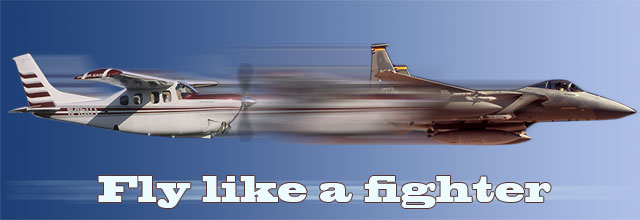
Flying in close formation through the weather, there was always the possibility that the wingman would lose sight of the leader. With wingtips only three feet apart, we were trained to turn away and immediately transition to looking inside at our own instruments.
I was going through T-38 instructor training and was flying a formation training sortie. I was the lead for the first half so got a good hack on the weather all the way to the area. The ceiling was around 800 feet with solid clouds up to around 15,000 feet. With the wingman in close formation all the way up, it would be my turn on the wing all the way down.
In the training area I normally flew with my visor up. Seeing other airplanes is based on light waves getting to your eyeball so I avoided blocking any light with sunglasses or the tinted helmet visor. I would lower my visor as per our descent checklist, mainly as an extra line of defense against a birdstrike. The new lead joined me in close on the right wing and we started our descent.
 That was a long time hanging on the wing, staring to my left the whole way. As we got lower the clouds got thicker and darker. We finally rolled out on about a 15 mile final when the lead completely disappeared. I waited long enough for a quick hope of him reappearing—about 1.5 seconds—then initiated lost wingman with a radio call, a slight turn away, and I turned my head to the right to look inside my cockpit.
That was a long time hanging on the wing, staring to my left the whole way. As we got lower the clouds got thicker and darker. We finally rolled out on about a 15 mile final when the lead completely disappeared. I waited long enough for a quick hope of him reappearing—about 1.5 seconds—then initiated lost wingman with a radio call, a slight turn away, and I turned my head to the right to look inside my cockpit.
When we were about 30 feet away from the lead, the clouds parted and my instructor wanted me to rejoin again, so I looked back left, and in an instant we were back in the clouds. And I immediately had vertigo, induced by the head movements back and forth. I got back on the gauges, fought to continue my turn away from lead, then had my instructor take the jet until my internal gyros recaged themselves.
There were a few good lessons we learned. It turns out that my instructor never lost sight of the lead, as he left his visor up for the descent. My dark gray visor matched the gray hue of the clouds such that I lost sight. Next, rapid back and forth head movements in the clouds while turning are exactly what physiology class taught us to avoid so as to avoid vertigo. The last lesson was once you start going lost wingman, continue with lost wingman—unless the skies totally clear up for you. Turning back toward the lead is not ideal with the potential to lose sight again. In addition, I would not have had vertigo if I had stayed heads down in my turn away from lead.
If you wear sunglasses while flying, be aware that they do alter reality depending on the outside conditions. I was even on an F-15 flight in widespread haze throughout the entire training airspace where we couldn’t see any horizon. My flight lead was wearing a yellow tinted visor for the first time and called in a pilot report of “sunny skies.” When I told him to raise his visor he quickly updated his report. When trying to see other airplanes, the naked eye is normally best. Finally, when you decide to abort a takeoff, break out of the traffic pattern, or initiate a go-around, don’t second guess yourself. Do it to completion—it is the safer course to follow.
Larry Brown of Colorado Springs, Colo., is a retired Air Force F-15 pilot who is using the lessons he learned as a fighter pilot as a GA pilot in his Cessna P210. Brown, who has 2,700 hours total time during his 33 years of flying, also was an instructor pilot and flight examiner in the Air Force T-38 and instructor pilot in the T-52, the military’s version of GA’s Diamond DA40. See previous installments of “Fly like a fighter.”



